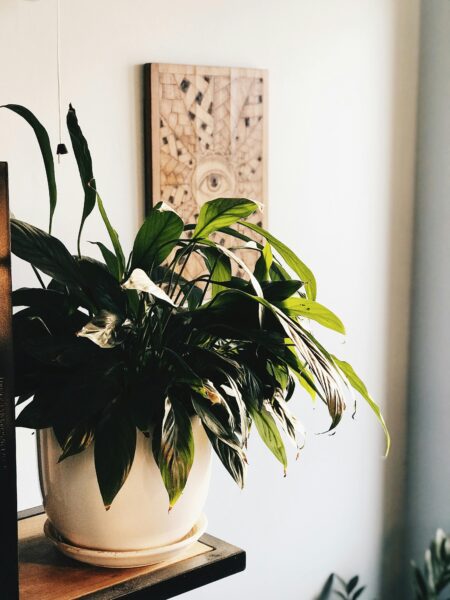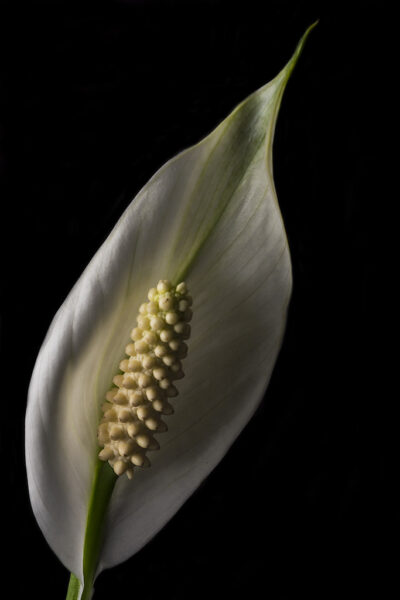Ever noticed your peace lily's leaves turning brown and wondered what went wrong? You're not alone! Peace lilies are stunning houseplants, but they're quite expressive when their needs aren't met. Let’s dive into the common causes of browning leaves and how to keep your peace lily thriving.

Watering trouble is one of the top reasons peace lily leaves turn brown. Overwatering can lead to root rot and fungal infections, while underwatering results in leaf yellowing that eventually turns brown.
If you're dealing with persistent drooping leaves or browning tips, check out this guide on peace lily drooping causes and solutions for more insights.
A simple tool like a moisture meter can be your best friend to confirm if the soil isn’t too wet or dry.

Peace lilies originate from tropical rainforests, so low humidity levels can leave leaf tips dry and brown. Here are some ways to replicate their natural environment:
Happy peace lilies love a humidity boost!
Temperature extremes are another culprit. Peace lilies thrive between 65–75°F (18–24°C). Excessive heat and cold drafts can stress the plant, leading to browning leaves. To protect your peace lily:
Peace lilies crave bright, indirect light. Direct sun can scorch their delicate leaves, while insufficient light can prompt health issues. Place your plant in a spot where it receives plenty of indirect light but is shielded from harsh sun rays. Learn how different lighting conditions and care factors may affect your plant by exploring this useful resource on peace lilies from Ask Extension.
Overfertilizing can cause a salt build-up in the soil, contributing to brown tips. To prevent this:
Consider using a plant-specific product like GARDENWISE Peace Lily Fertilizer to give your plant a nutrient boost while avoiding damage.
If you’re using chemically treated tap water, your peace lily might not be happy. Chemicals like chlorine can harm plant health. Be sure to:
If your peace lily’s leaves are already brown, there’s hope! Follow these strategies:
| Problem | Solution | Why It Helps |
|---|---|---|
| Brown Tips | Trim damaged parts | Stimulates healthy new growth |
| Overgrown Roots | Repot in a larger pot | Improves drainage and root space |
| Overfertilization | Flush soil or repot | Removes salt build-up |
For similar houseplant issues, such as leaves turning brown, the solutions provided in this guide on avocado tree leaf browning can offer valuable tips that apply broadly to many indoor plants.
Remember, once leaves turn brown, they won’t turn green again. However, by addressing the underlying causes, you can ensure your plant produces fresh, healthy foliage.
Taking care of a peace lily is all about consistency. From proper watering and humidity adjustments to the right lighting and temperature, small tweaks can make a big difference. With a little love and attention, your peace lily will thrive and add a touch of elegance to your home.
What’s been your biggest challenge with peace lily care? Share your experiences or insights in the comments below!
The most common reason for peace lily leaves turning brown is excessive lighting. Peace lilies thrive in low-light conditions as they naturally grow on jungle floors. Avoid placing them near windows where they receive direct sunlight. Overwatering and chemically-treated water can also contribute to browning.
Peace lilies usually droop when they're thirsty, indicating the need for water. Observe when the plant starts sagging and water it a day before. Generally, watering once a week and misting the leaves during summer maintains optimal hydration.
Common issues include browning leaves due to improper lighting, over or under-watering, inadequate drainage, and exposure to extreme temperatures or chemically-treated water. Ensuring the right environment can help avoid these problems.
To revive a dying peace lily, assess the amount of light and adjust placement if necessary. Ensure proper watering by letting the soil dry out between waterings and avoid direct sunlight. Repotting with fresh soil and removing any dead leaves can also aid recovery.
Peace lilies prefer well-draining potting soil that retains some moisture. A mix with peat moss, perlite, and sand is ideal. This combination ensures good drainage while maintaining the damp conditions that the plant naturally likes in its jungle habitat.
Now that you've got the scoop on keeping your peace lily lush and green, we’re sure you'll become the plant whisperer you’ve always dreamed of! But remember, plant care is just one step of the journey. Why not continue exploring ways to beautify your home with greenery? We'd love to see how your plants are doing and hear your plant-parenting tips. Connect with us on Pinterest for more inspiration, get behind-the-scenes peeks on our Instagram, and join the conversation over on X (formerly Twitter). Of course, don't forget to like our Facebook page to stay updated with our latest tips and tricks. We’re excited to see your progress and join you on this leafy adventure! 🌿

Immerse yourself in architecture’s most boundary-pushing ideas—where innovative home improvements meet visionary urban developments. Discover new building techniques, materials, and creative concepts that are redefining how we shape our spaces on a global scale.